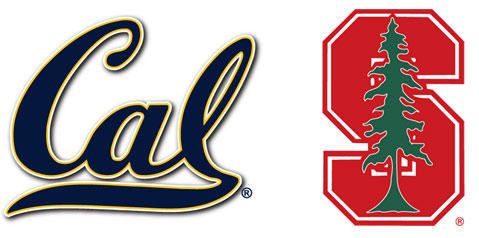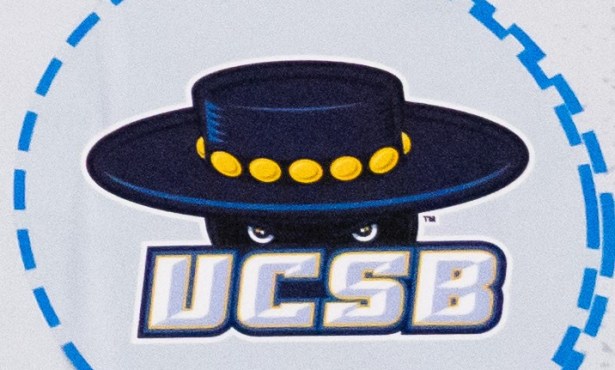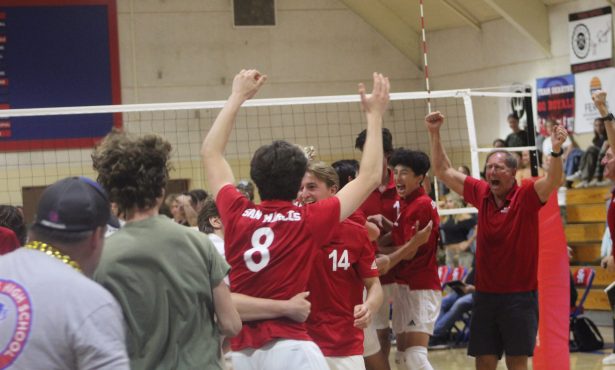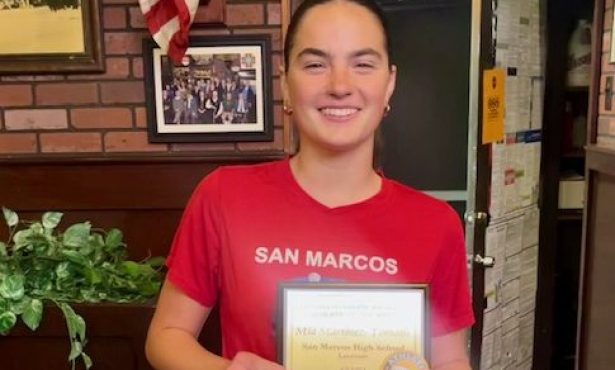UC Berkeley vs. Stanford
Football Rivals Play for the Axe at the Big Game

They call it “Big Game,” as if to accentuate the hunt aspect of the enterprise. And the physical trophy in question is an aged, handle-less axe on a plaque. Blood is spilled, in effigy, and trees burned, and name-calling of escalating intensity reaches fever pitch. For anyone who is hip to the tradition, the “Big Game” between NoCal rivals UC Berkeley and Stanford, much of what follows in this article will be eye-rollingly familiar. For those as-yet uninitiated, welcome to the RivalDome.
For this observer, the experience took on an acute and strained meaning. Son Sam is a senior at Cal and daughter Claire a freshman at Stanford, making for a dilemma of cleaved alliances on the part of us parents. The situation suddenly seemed akin, on some microscopic level, to that of Civil War clans in which the family trees had branches on both sides. At a delicious Indian dinner that night (Breads of India, in Berkeley), Sam gently laughed at the notion of my having the temerity to write about sports, knowing firsthand about my being lost in the world of culture. “What do you know about sports,” he asked, justly enough, “or rivalries?” Guilty as charged. I could only hide behind the protective armor of socio-cultural intrigue, as well as the integral involvement of my children, on either side of the Bay.
(As a personal disclaimer, the problem of who to root for is softened, for me, by the fact that my childhood passion for sports-football in particular-was severely deflated once I picked up the guitar and a deepening love for music. The latter seemed to KO the former. Now, I tend to root for the underdog, whoever is losing. But I digress.)
As it happens, the war analogy is apt regarding “Big Game,” if slightly hyperbolic. All over Stanford in the week leading up to the game, bloodthirsty references flowed, from the reddened water in fountains to images of the Cal Bear, beheaded, sometimes with the war chant, “If it bleeds, kill it!” (This coming from Stanford, whose “mascot” is a tree). At Stanford, the annual bacchanalian “Gaieties” variety show-this year dubbed “Dazed and Cal-fused”-was expectedly chock-a-block with inside joking, sex, and violence (toward the Cal bear, mostly). While following a vague storyline, the show was largely an excuse to indulge base and raucous instincts. It all culminated in a stage full of cheerleaders, the infamously avant-garde-ishly bad Stanford band, and others in and out of costume, indulging in ritualistic pre-game mayhem. They also ceremoniously paraded “the Axe”-Stanford had won last year-around the aisles of the Memorial Auditorium, to be touched and adored one more time before possibly surrendering it to the enemy.
In fact, they did surrender the trophy late the next afternoon, after losing to Berkeley, 37-16. But team efforts and game data aside, the spectacle itself is part of the Big Game’s brutal charm, with its gladiator-like atmosphere and the contact sporting violence on the field before 70,000 onlookers. Home team advantage also means advantages with the home team’s sonic fervor.
Among Berkeley’s game time traditions is the band’s playing of Black Sabbath’s “Iron Man” and a seal-style clap whenever the other quarterback is sacked. Black Sabbath’s comic book metal classic got plenty of play on this day. The blurry sonic nature of mass chants meant that the call-and-response hollers of “Go:.Bears:.Go:Bears” sounded more like “No:yes:.No:yes,” but it was the spirit that counted.
Each team’s supporters screamed for the blood of the other, albeit in unevenly distributed sections of Cal’s blue and gold and Stanford’s cardinal red. At one point, the ragtag Stanford band-as loose-limbed and funky around the edges as the school’s academic reputation is serious-made a muffled noise at the far, cardinal-colored end of the stadium, just before a penalty flag went down for “unsportsman-like conduct.” The charge was against the Stanford coach, but one wondered if it could have been a music police infraction.
Soon enough, Stanford’s rough and ready band showed its true colors at halftime, with wildly be-costumed garb and similar musical accoutrements. One drummer was strapped to a roving, twirling apparatus, for a 360-degree sound, while another played a STOP sign and another a beer keg. A narrator spun out a fantastical yarn about an impending major earthquake event and, rather sadistically, a fiscal meltdown that would spell peril for the UC system while the school that uber-capitalist Leland Stanford built would weather the economic storm.
All in all, the Stanford band performance was liberally strewn with elements from some renegade circus sensibility. By contrast, the straitlaced, down-the-middle marching band from Cal was more about spit-and-polish music and choreography, militaristic in its way, as it cranked out hits from the dark ages of the ’90s, the stuff of Back Street Boys et al. Later, during the second half, the Cal band channeled Kurt Cobain with “Smells like Teen Spirit.” Call it post-teen spirit.
On a proudly local note, the big video monitor at one end of the stadium at one point flaunted a featurette on the Cal center, #51, Alex Mack, a San Marcos graduate noted for his admirable stance of turning down an NFL job offer to finish his schooling.
Oh, and to touch on an area of reportage better left to John Zant and his colleagues (or to my son Sam), Berkeley mostly commanded the field all afternoon, although Stanford had an impressive rally in the final quarter. Mustering up 13 of its 16 points in the final quarter, the Cardinals showed a late-breaking coordinated effort that would have come in very handy earlier.
At the stroke of 0:00 on the clock, as tradition dictates, the glorious Axe was handed back to Cal for the year. Said Axe made its gradual way through the hordes (present company included) flooding down onto the field for autographs and general warm-hearted mingling.
Afterward, our clan headed up for the $2 trip to the top of the Campanile (built in 1914, rising to 307 feet) to the platform with a killer view of the campus and the Bay and city of San Francisco beyond. As we milled and mulled in this scenic space next to a world class carillon, Claire, not the biggest football fan, seemed none the worse for wear after her school’s demise. Looking at next year’s “Big Game,” the last one against her brother’s team from across the Bay during their college years, she shrugged. “After next year, I won’t need to care anymore.”
For many, 2008’s Big Game was just that. For a more select demographic of parents with children on either side, it becomes a somewhat surreal experience, in which the agonies and ecstasies of partisan, sportsman-like conduct might cancel each other out. A lesson learned: it’s hard work being a neutral country.



